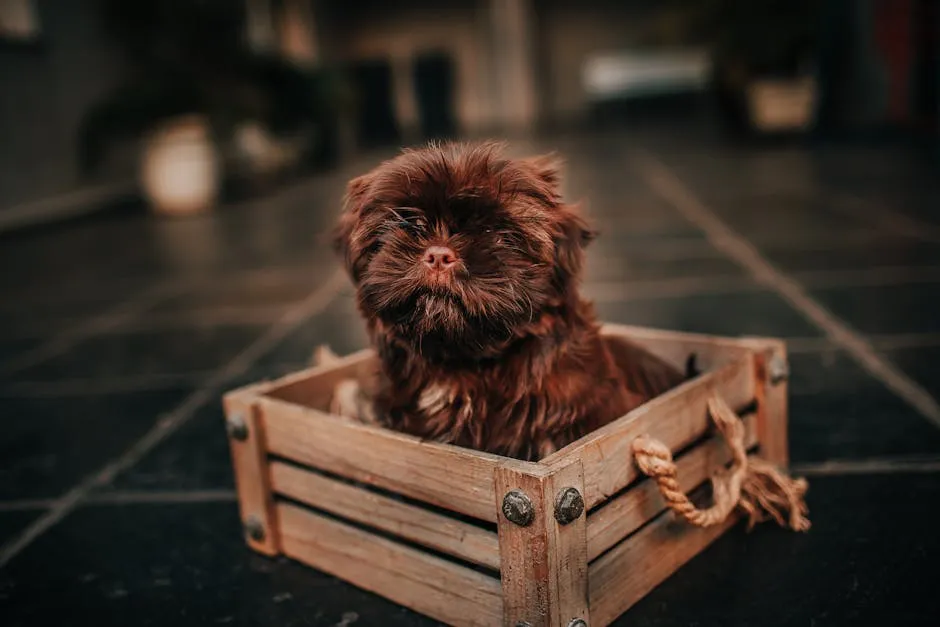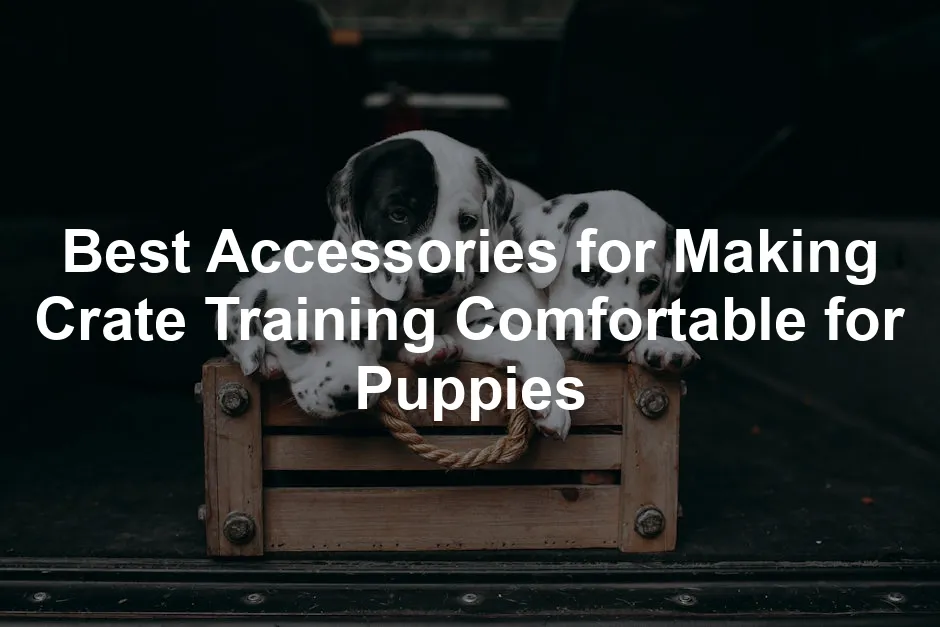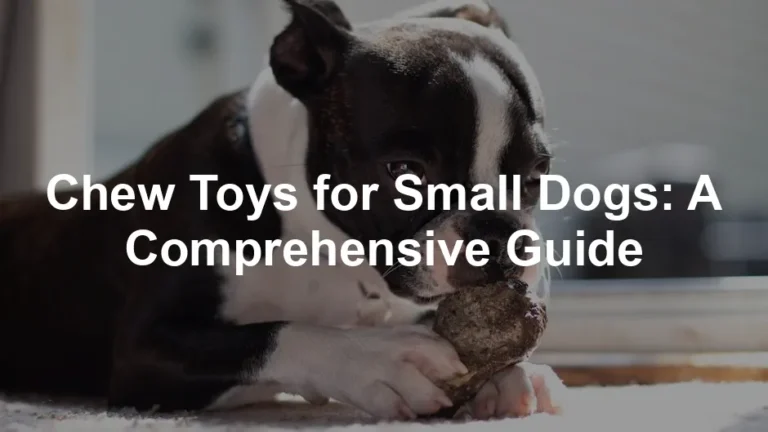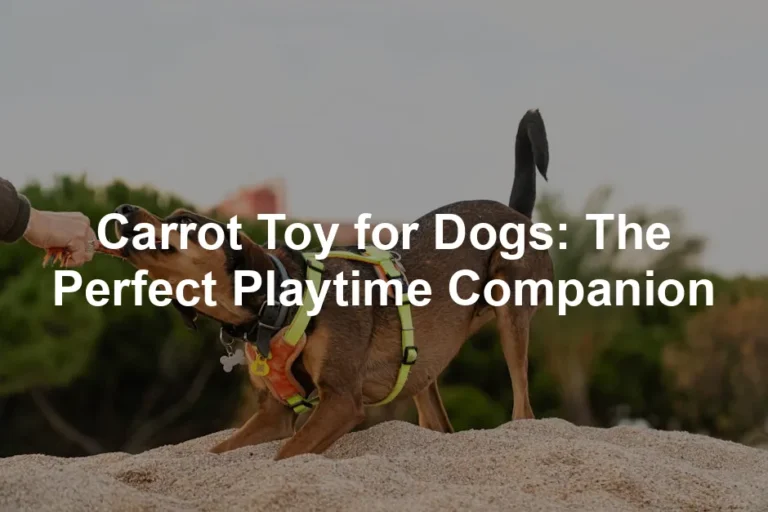Introduction
Crate training your puppy can be a daunting task, but with the right accessories, it can transform from a dreaded chore into a cozy retreat. Imagine your little furball snuggled up in a plush bed, surrounded by their favorite toys, while you sip your coffee in peace. This guide will walk you through the essential accessories that ensure your puppy feels comfortable and secure in their crate, turning it into a safe haven rather than a mere containment area.
The key to successful crate training is to create an environment that your puppy associates with comfort and relaxation. A well-furnished crate can help your pup feel at ease during the training process. It’s not just about keeping them contained; it’s about making their space feel inviting. Whether you’re a first-time puppy parent or a seasoned dog owner looking to refresh your knowledge, this comprehensive guide has something for everyone.
First off, let’s talk about the importance of choosing the right crate. A crate that’s too big can encourage accidents, while one that’s too small can cause discomfort. Your puppy should be able to stand, turn around, and lie down comfortably. Once you’ve nailed the crate size, it’s time to add some cozy accessories that will make your puppy feel right at home.
Imagine tossing a soft blanket into the crate, making it a perfect spot for your puppy to curl up and take a nap. Or picture a few engaging toys that can keep them occupied while you’re away. These simple additions can significantly enhance your puppy’s crate experience.

In this guide, we’ll cover the essential accessories you need to make crate training a positive experience for both you and your pup. From comfortable bedding to interactive toys, we’ll explore everything you need to turn the crate into a comforting retreat.
So, get ready to transform that crate into a cozy den, where your puppy can feel safe and secure while you enjoy a well-deserved break. By the end of this guide, you’ll have all the tools you need to make crate training not just bearable, but enjoyable for your furry friend.
Summary of Key Points
Creating a comfortable crate environment involves more than just tossing in a bed. It’s about crafting a cozy, inviting space that helps your puppy feel secure and relaxed. Here’s a sneak peek at what we’ll cover:
- The importance of choosing the right size and type of crate
- Essential bedding options for comfort and warmth
- Interactive toys that keep your puppy engaged and entertained
- The role of calming accessories like crate covers and soothing sounds
- Practical considerations for water and food in the crate
- Tips for gradual crate introduction to build positive associations
By the end of this guide, you’ll be equipped with the knowledge to make crate training a positive experience for both you and your pup, helping them to see their crate as a personal retreat. This journey together will not only strengthen your bond but also ensure your puppy grows into a well-adjusted, happy dog. With the right approach and accessories, crate training can be a rewarding process that sets the stage for a loving and trusting relationship between you and your furry companion.
Essential Accessories for a Comfortable Crate
Creating a cozy environment in your puppy’s crate can make all the difference during training. It’s about providing comfort, security, and a touch of fun. Let’s explore essential accessories that will transform that metal box into a delightful den.
1. Comfortable Bedding
First things first: bedding. Your puppy needs a soft surface to lie on. Look for chew-proof options. Trust me, those little teeth can be like tiny razors. Consider waterproof bedding as well. Accidents happen, and you don’t want a soggy mess to spoil the fun.
Some great options include:
- K9 Ballistics TUFF Crate Pad: This bed is durable and easy to clean. It can withstand the enthusiastic chewing of your little monster. Check it out here.
- Brindle Memory Foam Orthopedic Dog Bed: Perfect for older pups needing extra support. They’ll sink into blissful comfort while dreaming of chasing squirrels. Feel free to check out this amazing bed here.
- Hugglefleece Dog Mat: Soft and cozy, this mat is machine washable, making it ideal for messy puppies. Get yours here.
With the right bedding, your puppy will feel snug and secure. It might even become their favorite nap spot!
2. Crate Covers
Ever thought about a crate cover? These handy accessories create a den-like atmosphere. A cover blocks out distractions and helps your puppy feel protected from the chaos of the outside world.
When selecting a cover, look for breathable materials that are easy to wash. Here are a couple of recommendations:
- MidWest Homes for Pets Dog Crate Cover: This cover fits snugly and is machine washable. It’s a stylish way to keep things cozy. You can find it here.
- PetFusion Crate Cover: Made from durable fabric, it provides excellent ventilation while keeping the crate dark and inviting. Check it out here.
A crate cover can turn your puppy’s space into a safe haven, giving them the confidence to relax.
3. Interactive Toys
Keeping your puppy entertained is crucial. Boredom can lead to mischief. Therefore, interactive toys are a must-have. These toys provide mental stimulation and help reduce anxiety during crate time.
Here are some engaging options:
- KONG Classic: Fill it with peanut butter or treats for a tasty challenge. Your puppy will be happily occupied for a while. Get this fantastic toy here.
- Snuggle Puppy: This adorable toy mimics a heartbeat, providing comfort to anxious pups. It’s like having a buddy in there! Grab one here.
- West Paw Zogoflex Hurley: This durable chew toy is perfect for puppies who love to gnaw. It’s also great for fetch! You can find it here.
With toys like these, your puppy will associate their crate with fun and play, making them more willing to stay inside.
For more effective positive reinforcement techniques during crate training, check out our guide on effective positive reinforcement techniques for stubborn dogs.
Using interactive toys can significantly enhance your puppy’s experience in the crate. Learn more about positive reinforcement and how it can help with crate training.
4. Water and Food Accessories
Hydration and nutrition are vital, even in a crate. However, spills can create chaos. Luckily, there are spill-proof solutions to help keep things tidy.
Consider these options:
- Midwest Snap’y Fit Stainless Steel Bowl: This bowl attaches securely to the crate, ensuring your puppy has access to fresh water without creating a mess. Get it here.
- Choco Nose No-Drip Dog Water Bottle: This handy device attaches to the crate and provides a no-spill option for hydration on the go. Find it here.
For feeding, use puzzle feeders to make mealtime fun. This will keep your puppy engaged and provide mental stimulation while they eat.
5. Calming Aids
Sometimes, puppies need a little extra help to relax. Calming aids can ease anxiety and create a peaceful environment. These products help soothe nerves during crate training.
Here are some effective options:
- Adaptil Pheromone Diffuser: This diffuser releases calming pheromones, creating a serene atmosphere. It’s like a spa day for your puppy! Get it here.
- Calming Music or Sound Machine: Playing soft music can drown out noises and help your pup unwind. Many playlists are available online specifically for pets. You can check out various sound machines here.
- SmartPetLove Snuggle Puppy: This comforting toy with a heartbeat can reduce anxiety during crate time. Get yours here.
By incorporating calming aids, you’ll make crate training a breeze and help your puppy feel secure and at ease.
Creating a comfortable crate environment is all about the right accessories. With cozy bedding, a cover for privacy, engaging toys, hydration solutions, and calming aids, your puppy will see their crate as a safe haven. Happy crate training!
Tips for Successful Crate Training
Gradual Introduction to the Crate
Introducing your puppy to their crate should be a slow and enjoyable process. Start by placing the crate in a common area where your puppy feels comfortable. Leave the door open and let them explore at their own pace. Toss in a few treats to entice them inside. Encourage curiosity, but don’t push them in.
Once they’re willing to enter, you can slowly close the door. Don’t lock it just yet! Gradually increase the time your puppy spends inside. Reward them with treats for calm behavior. This builds positive associations with the crate. Remember, patience is key. Each puppy is different, and some may take longer than others to feel comfortable. Celebrate small victories!
Creating Positive Associations
Using treats and toys can make a world of difference. Fill the crate with goodies! Stuff a KONG toy with peanut butter or treats. Your puppy will love the challenge. You can also use their favorite toys. Let them know the crate is a fun place to be.
Start by feeding your puppy their meals in the crate. This reinforces a positive experience. Keep the initial crate time short and gradually increase it as they become more comfortable. Incorporate playtime in and around the crate to strengthen their bond with the space. Positive reinforcement goes a long way in crate training success.
For those adopting a rescue dog with anxiety, specific training tips can be incredibly helpful in easing the transition.
If you’re adopting a rescue dog, understanding their background can help you tailor your training. Explore our training tips for rescue dogs to ensure a successful crate training experience.
Monitoring and Adjusting the Environment
Keeping an eye on your puppy’s behavior inside the crate is essential. Observe how they react to being confined. Are they calm or anxious? If your puppy seems uncomfortable, it might be time to make adjustments.
Consider the crate’s location. Place it in a quiet area away from distractions. If noise or light bothers them, a crate cover can help create a cozy den-like atmosphere. Ensure they have comfortable bedding, and don’t forget their favorite toys! Make necessary changes based on your puppy’s comfort level, and always aim to create a positive environment that fosters relaxation.
Common Challenges and Solutions
Dealing with Anxiety
Puppy anxiety is real, and it can make crate training challenging. Watch for signs of anxiety, like whining, barking, or pacing. If your puppy shows these behaviors, it’s time to step back.
Try introducing calming aids, such as pheromone diffusers or soft music. These can help create a relaxing environment. Consider incorporating a snug blanket or a comforting toy that mimics a heartbeat. This can soothe anxious pups. Gradually build the time they spend in the crate, reinforcing calm behavior with treats or praise. With time and patience, your puppy will learn to feel secure and relaxed in their crate.
Preventing Destructive Behavior
Boredom can lead to destructive behavior. To keep your puppy engaged, offer a variety of toys. Chew toys and interactive puzzle toys can be great options. They provide mental stimulation and help prevent boredom during crate time.
Rotate the toys to maintain interest. Avoid leaving items that can be easily chewed into dangerous pieces. Ensure your puppy has a comfortable bed and a few safe toys to keep them engaged. A properly outfitted crate can turn into a fun retreat rather than a place of confinement. With these strategies, you can successfully prevent destructive behavior during crate training.
Don’t forget to check out the PetSafe Busy Buddy Bristle Bone. It’s a fantastic way to keep your pup engaged and entertained while they’re in the crate!
Conclusion
Crate training your puppy doesn’t have to be a stressful experience. With the right accessories, you can create a cozy retreat that your puppy will adore. Imagine your little furball snuggled up, feeling safe and secure in their own space. That’s the goal, right?
Start by investing in comfortable bedding. Plush, chew-proof mats or waterproof options will make their crate feel like home. Add a few interactive toys to keep them entertained and engaged. After all, a bored puppy is a mischievous one!
Remember, patience and positive reinforcement are key. Introduce your puppy to their crate gradually. Toss in treats and let them explore at their own pace. Celebrate their small victories, and soon they’ll associate the crate with comfort and safety.
Crate covers can also enhance the experience. They provide a den-like atmosphere, helping your puppy relax. Just ensure the cover is breathable to maintain airflow.
Also, consider hydration. A spill-proof water bowl is essential for long crate sessions. Keeping them hydrated ensures they remain healthy and happy. You might want to check out the PetSafe Drinkwell Platinum Pet Fountain to keep your puppy’s hydration levels in check!
Finally, remember that crate training is a journey. Each puppy is unique, and some may take longer to adapt. With consistency and love, your puppy will learn to view their crate as a safe haven. In no time, you’ll relish peaceful moments while your furry friend enjoys their cozy retreat. Both of you will benefit from this harmonious arrangement, leading to a happier home.
FAQs
How long can I leave my puppy in the crate?
The duration depends on their age and breed. As a general rule, puppies can hold their bladder for about one hour per month of age. So, a three-month-old puppy shouldn’t be crated for more than three hours. Remember to consider their individual needs and adjust accordingly.
Should I leave food and water in the crate?
It’s a balancing act. Leaving food can lead to messes, but feeding your puppy in the crate helps create positive associations. As for water, it’s crucial for hydration. Consider a spill-proof bowl to keep things tidy.
Can I use a collar in the crate?
It’s best to avoid collars in the crate to prevent strangulation risks. If your puppy needs to wear one, opt for a breakaway collar that releases under pressure. Safety first!
What if my puppy cries in the crate?
Crying is common during crate training. To soothe your puppy, provide comfort items like a soft blanket or a toy that mimics a heartbeat. You can also play soft music to create a calming atmosphere. Gradually increase their crate time to help them feel secure.
How do I clean the crate?
Keeping the crate clean is essential for your puppy’s health. Use a mild soap and water solution to wipe down surfaces. For bedding, opt for machine-washable options. Regularly inspect for any messes or odors to maintain a hygienic environment.
Please let us know what you think about our content by leaving a comment down below!
Thank you for reading till here 🙂
All images from Pexels





